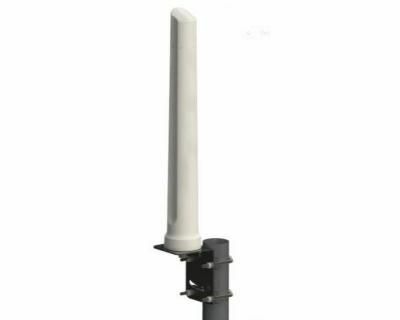Best Antenna For Your LTE Router
Jacques du Rand 2020-09-06
Which LTE antenna do you need for your new Telkom LTE /WiFi connection. We asked the industry experts at Poynting.tech for their recommendations.
See Our Updated List And Prices For LTE/4G Antennas & Boosters As Of Sep 2020
The choice of omni-directional and directional antenna is not always simple. We will try to explain the key differences experienced by using a uni-directional (aka ‘directional’) antenna vs. an omni-directional (aka ‘omni’) antenna.
Having a dedicated antenna for your Rain LTE or Telkom LTE connection will improve the overall experience.
The essence is that a directional antenna focuses its gain (reception) in one direction and reduces the gain (reception) in the other directions, much like a flashlight does to a light bulb. The omni antenna provides similar reception in all directions (like a normal round light bulb). This can be both an advantage and disadvantage, for which a few points are listed for consideration.
Omni antenna:
- Benefits are that it can receive signal from virtually all directions. I.e. the mobile or LTE enabled router can roam across various cellular mobile base stations in any direction. If the one cellular base station (tower) is congested or faulty, then the possibility of receiving another site is better than when compared to a directional antenna. You will, therefore, have a better probability to maintain good connection stability in these situations.
- A disadvantage is that you will also potentially receive interference from all directions, which could degrade your experience. So, the benefit above could also be a disadvantage in higher interference areas (interference is the reception of unwanted signals that can degrade your experience).
- The overall gain of the omni antenna is lower, so the peak throughput is lower when generally compared to the directional antenna.
- An omni antenna is easier to install than a directional antenna and it does not require realignment/adjustment when the network changes (new sites, network problems, etc.).
- Here are some of our best performing omni-antennas for LTE:
Directional antennas:
- When you are far away from cellphone towers and only have marginal signal reception from a single site, then a directional antenna is often a better choice.
- The benefit is that the signal from the target direction is improved through the directivity gain (like amplification). The gain from other directions is reduced as a result and hence the interference (unwanted signals) is suppressed. This can improve the Carrier to Interference Ratio (C/I) where a higher C/I is beneficial in cellular and other radio frequency (RF) systems reception. The signal reception stability is better for this reason, but only while the target base station (tower) is not congested nor faulty.
- When the site to which you have directed the antenna starts performing poorly, you may need to re-align the antenna.
- Implementation of the antenna may be more complicated as the antenna must be directed towards the target base station or transceiver. Selecting which site to direct the antenna towards is not always easy.
- When the cellular base station (tower), which your antenna is directed towards, becomes congested or faulty, then the impact will become more severe when compared with an omni antenna. From a general stability perspective, the omni-directional antenna might be a better choice.
- When the ability to receive a signal where there is virtually no signal, or an area with high interference, then a directional antenna can be considered.
- Here are some of our best performing directional antennas for LTE:
The crude essence is:
Omni - better reliability overall (especially in cellular site outages and congestion scenarios) but slower throughput and less efficient in difficult areas. Better option for urban/suburban areas with sufficient cellular base station sites.
Directional - better throughput, but when the cellular base station is congested or out of service, then the experience can become terrible. This is where the omni will perform better. However, in difficult areas (mostly distant rural areas) the directional antenna does reduce interference from other sites which are not in the same direction as the target site - this is what improves the C/I and thus the throughput.
Implementation of both directional and omni antenna in a MIMO router: As the above scenarios have their advantages and disadvantages; it is also possible to combine them both in a MIMO configuration which would reduce each option’s disadvantages.
For more information on any of these products have a look at the product information sheets on our website or contact us at info@poynting.tech.
Please have a look at our Blog for more articles on LTE antennas, RF and electromagnetic engineering.
You can also follow us on YouTube to get answers to your RF Questions:
View the latest Telkom LTE And WiFi Deals
Written by Stephen Froneman







